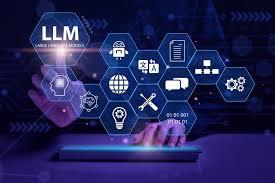In today’s AI-driven digital era, businesses and developers are increasingly turning to Large Language Models (LLMs) to create intelligent, human-like applications. From automated content creation to advanced data analysis and customer service, LLM-powered applications are transforming industries. By combining LLMs with AI automation tools, companies can scale faster, streamline operations, and deliver more personalized user experiences.

LLMs combined with automation tools address a wide range of challenges:
Unlike conventional machine learning models that focus on narrow tasks, LLMs bring versatility — from powering conversational AI to enabling advanced research, workflow automation, and content generation. Their adaptability and ability to process massive amounts of unstructured data allow businesses to create applications that are not only efficient but also context-aware and continuously improving.
As businesses explore LLM automation, several application types are emerging, each tailored to specific needs.
Unlike traditional rule-based AI systems, which follow predefined instructions and struggle with unexpected inputs, adaptive LLM applications are dynamic and context-aware. Rule-based systems are rigid — they can only respond to what they have been explicitly programmed for, making them useful for simple, repetitive tasks but limited in handling complexity. In contrast, LLM-powered applications leverage natural language processing and machine learning to understand context, generate human-like responses, and improve continuously through user interactions. This adaptability allows LLMs to automate sophisticated workflows, personalize user experiences, and evolve with changing business needs, making them far more powerful than static, rule-driven solutions.
Developing an LLM application is a structured process requiring both strategic planning and technical execution.
Start by identifying the purpose of your LLM application and the exact problems it will solve. Understand your target audience and the value the app will provide to them. Define clear objectives such as automation, personalization, or data analysis. Plan how the LLM will integrate with your existing tools and workflows.
Once the strategy is in place, the focus shifts to designing workflows that feel natural and user-friendly. This involves mapping user interactions, anticipating common and complex queries, and creating conversational or task flows that deliver personalized and efficient responses. A strong workflow design is essential for ensuring smooth user experiences.
At this stage, businesses choose between no-code tools for quick deployment or custom development for scalability. The technical build includes integrating APIs and backend systems, implementing NLP and machine learning for adaptive intelligence, and ensuring data security. Robust development practices lay the foundation for long-term success.
| Development Stage | Description | Key Considerations |
|---|---|---|
| Strategy & Goals | Workflow Design | Development |
| Define purpose and user needs | Create intelligent task flows | Build or integrate with automation |
| Target audience, integrations | Context, NLP, personalization | APIs, scalability, security |

Automation tools connect LLMs with enterprise systems—CRM, ERP, databases—ensuring seamless execution of tasks.
LLMs improve over time by learning from user interactions, providing better personalization and predictions.
One of the most important metrics for measuring LLM success is how effectively it completes conversations or tasks without human intervention. A high automation rate indicates that the model is handling queries accurately and reducing manual workload. This shows the reliability of the system in real-world use cases. Businesses can track this to ensure smooth, end-to-end task execution.
Customer satisfaction reflects how well the LLM meets user expectations and delivers value. Quick and accurate response times enhance the user experience, making the application more dependable and engaging. Measuring feedback scores alongside resolution speed gives a clear picture of performance. When users are satisfied, it directly translates into stronger adoption and trust.
As industries evolve, LLM-powered applications with AI automation tools are becoming a cornerstone of digital transformation. By automating workflows, scaling operations, and personalizing user experiences, businesses can achieve greater efficiency and customer satisfaction. The future will see smarter, more adaptive LLMs that integrate seamlessly with enterprise systems, predict user needs, and deliver real-time intelligence. Companies that embrace these technologies today will lead tomorrow’s digital economy.
LLM applications are AI-powered solutions that use Large Language Models to automate workflows, generate content, and provide intelligent interactions.
LLMs combine NLP and machine learning with APIs to handle tasks dynamically, reducing the need for manual input.
Marketing, customer service, healthcare, finance, and e-commerce are leading adopters.
Yes, they can be connected through APIs to CRMs, ERPs, and third-party services.
Track KPIs like automation rate, satisfaction scores, ROI, and resolution speed.
Frameworks like LangChain, Hugging Face, LLaMA, GPT models, and no-code automation platforms.
Yes—when built with encryption, access control, and compliance standards.
Advancements in adaptive learning, emotional intelligence, and predictive AI will make them even more powerful and human-like.